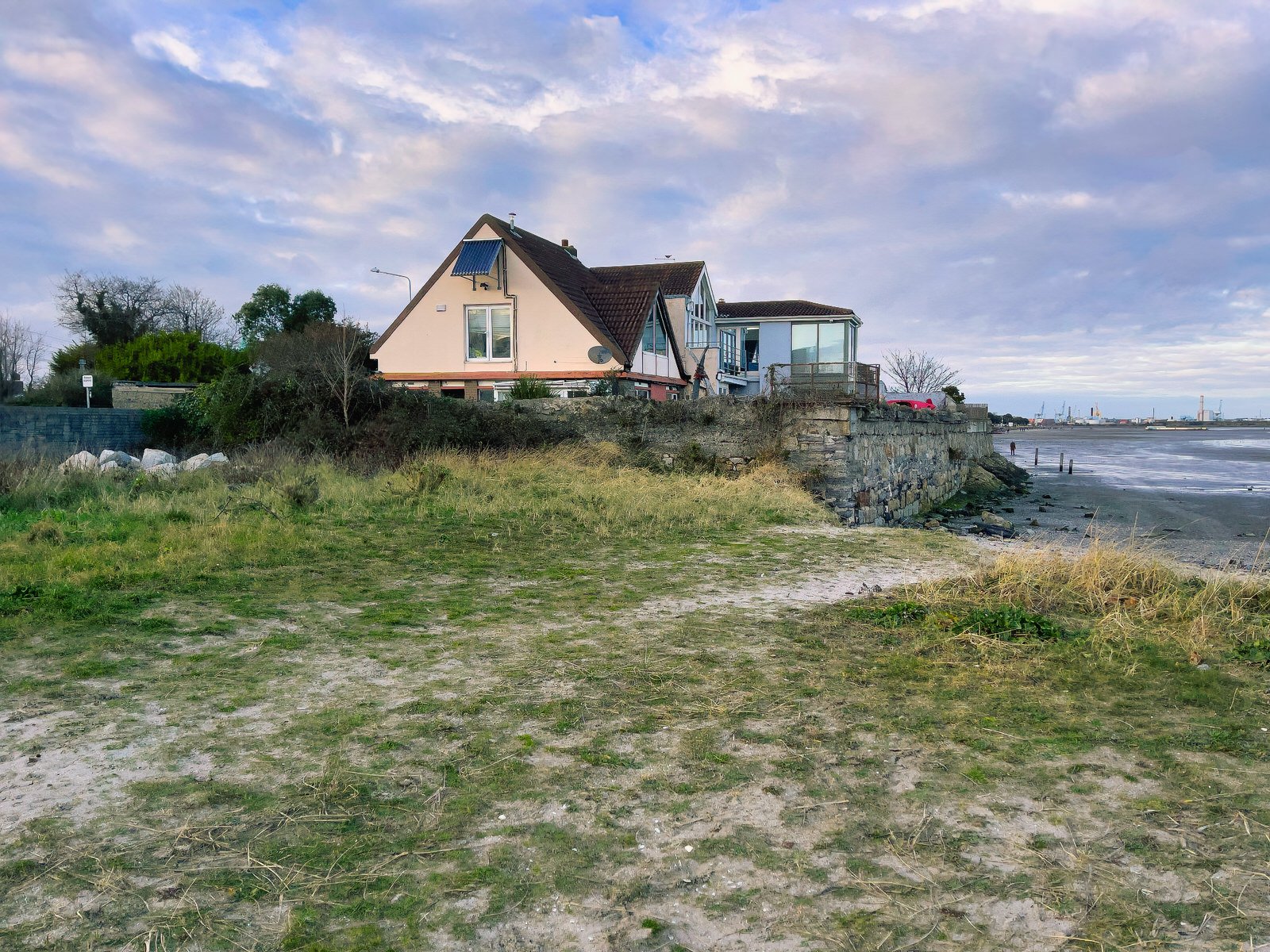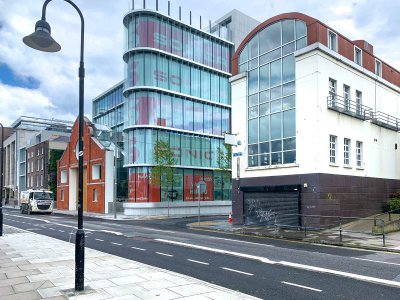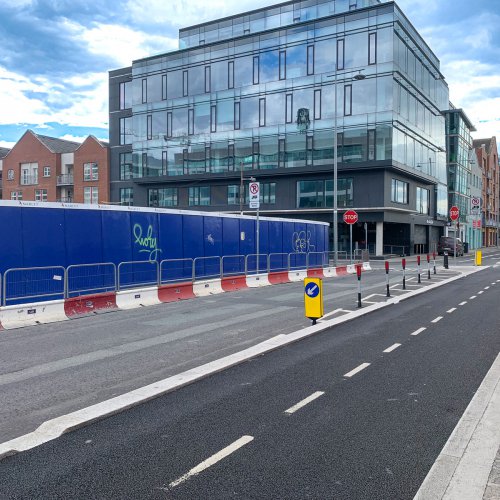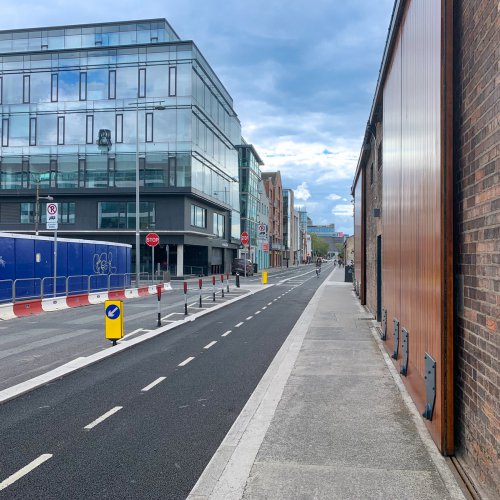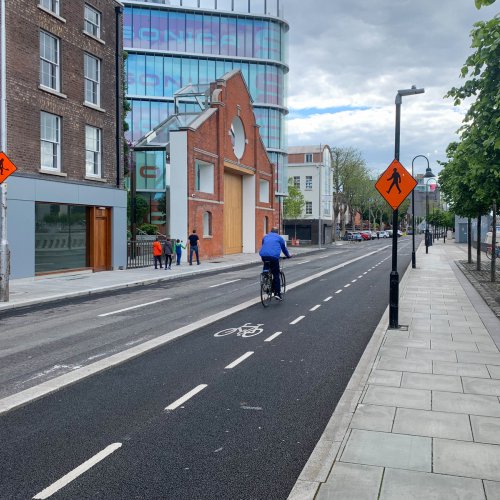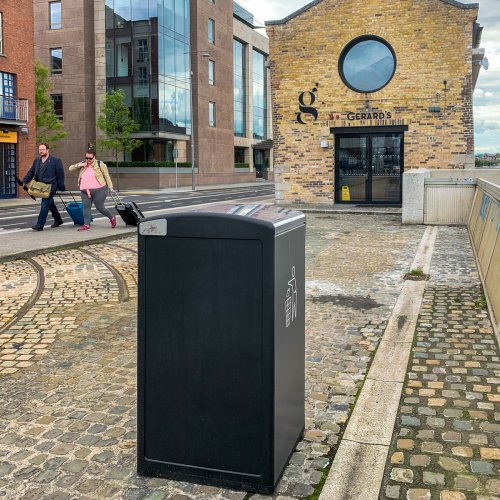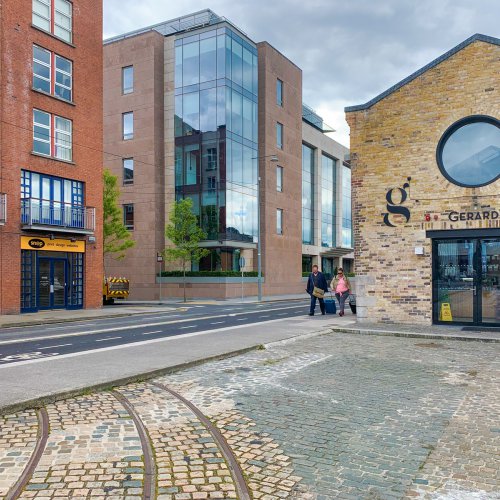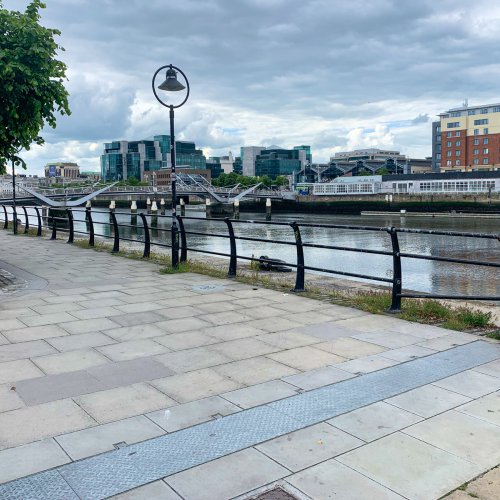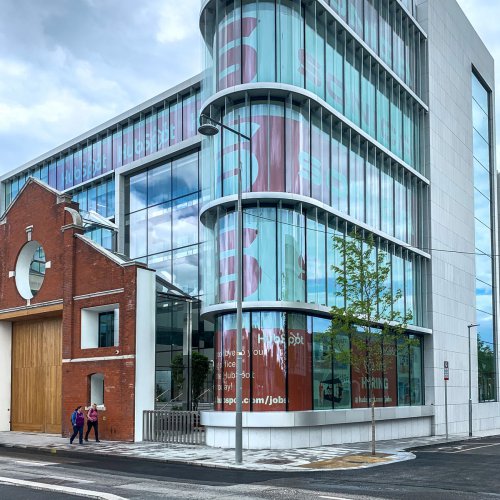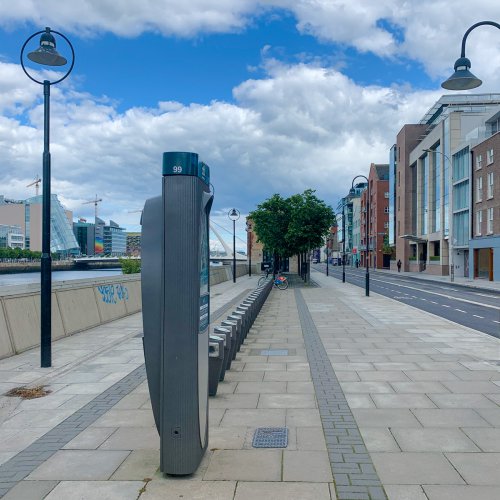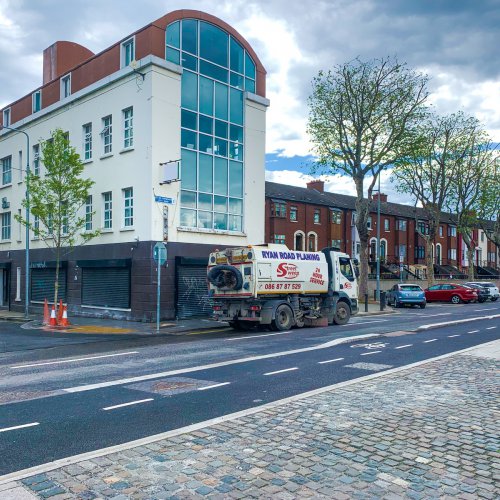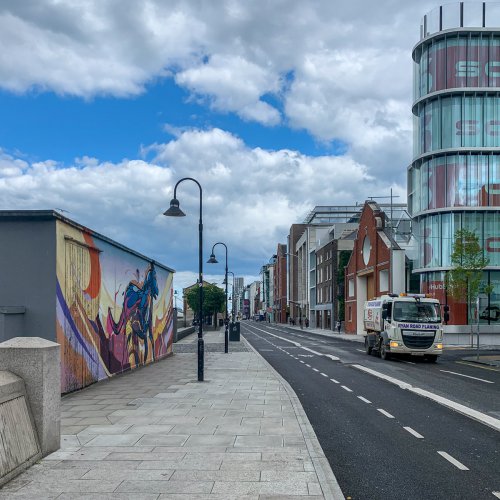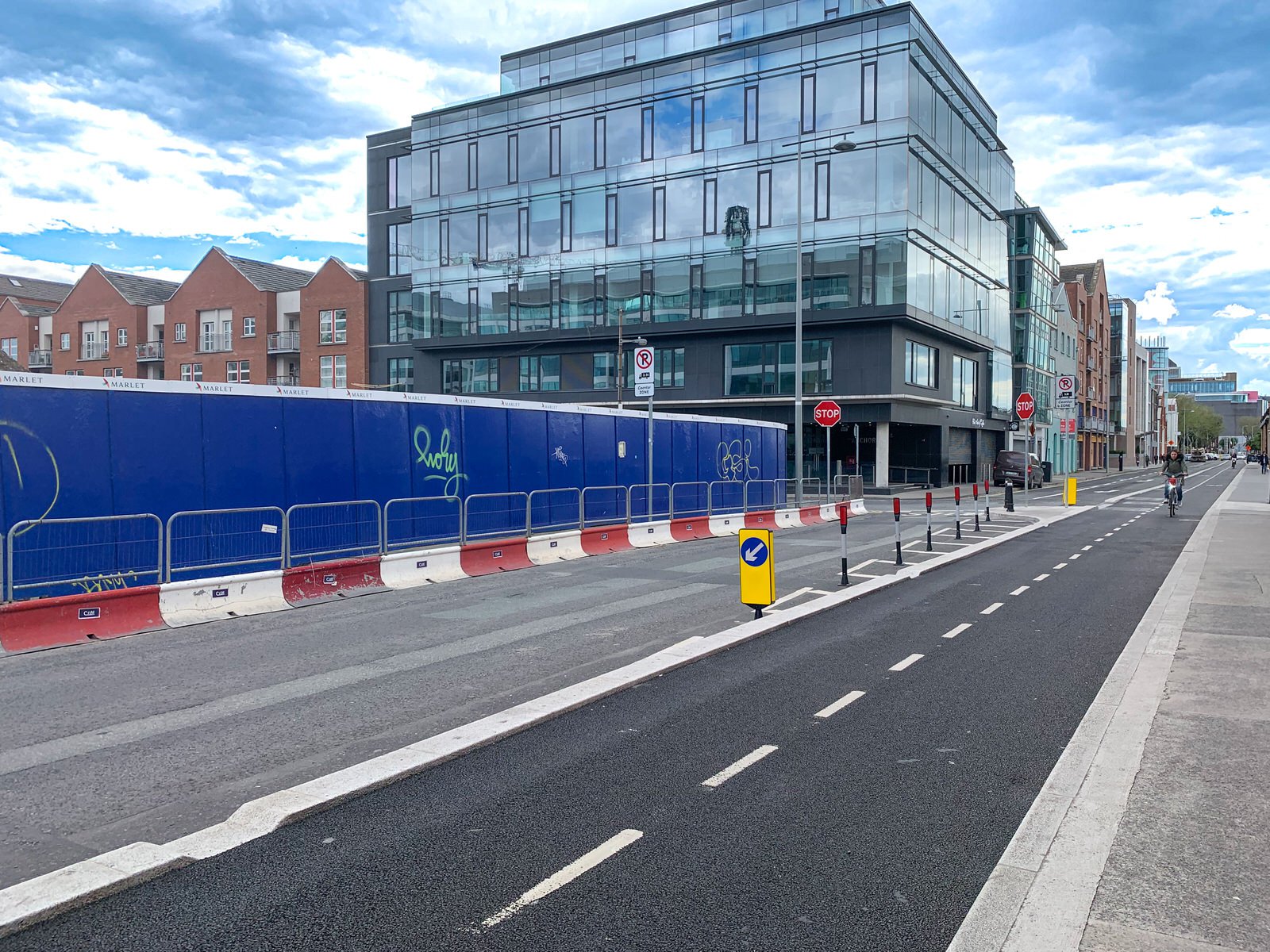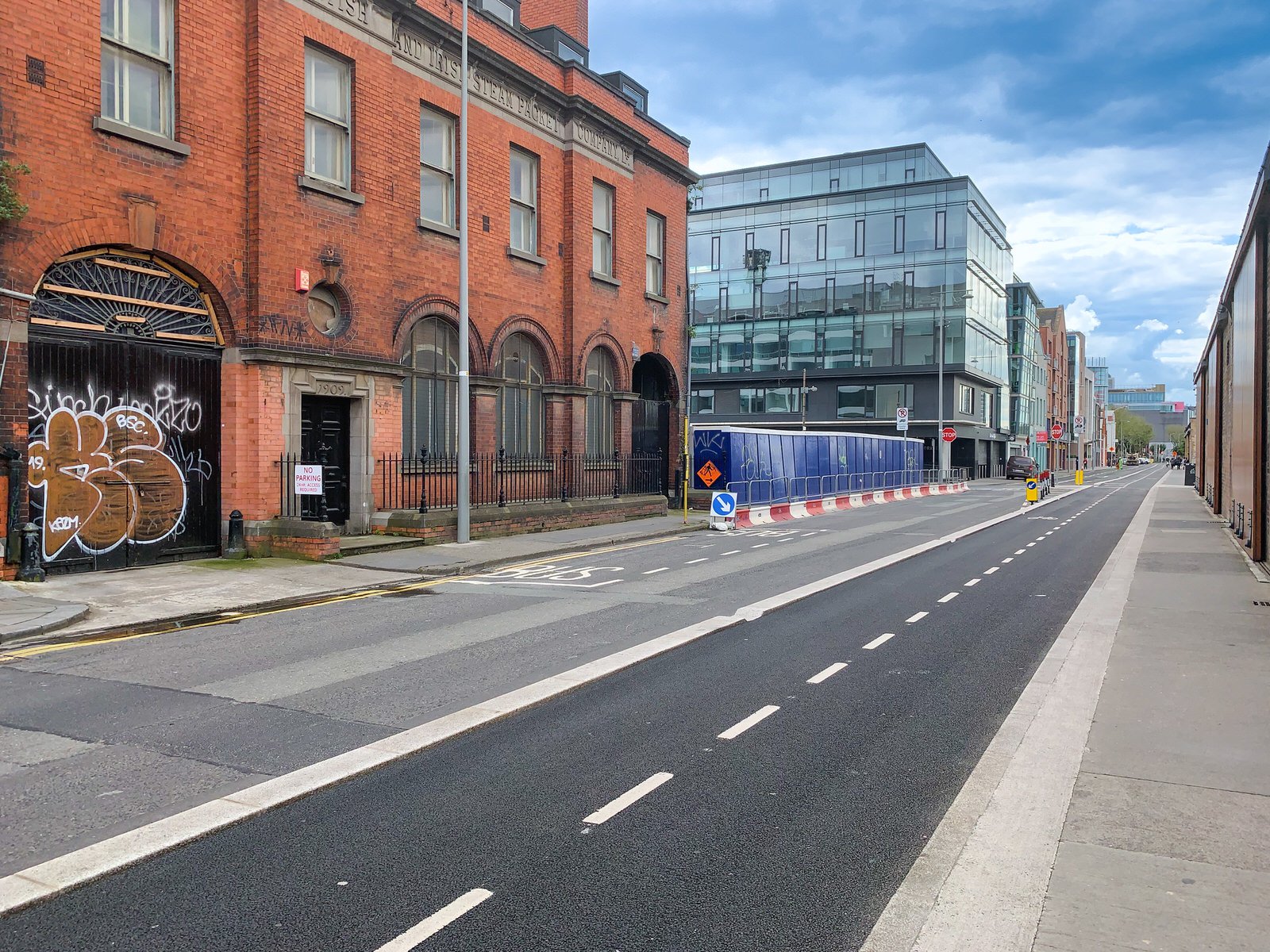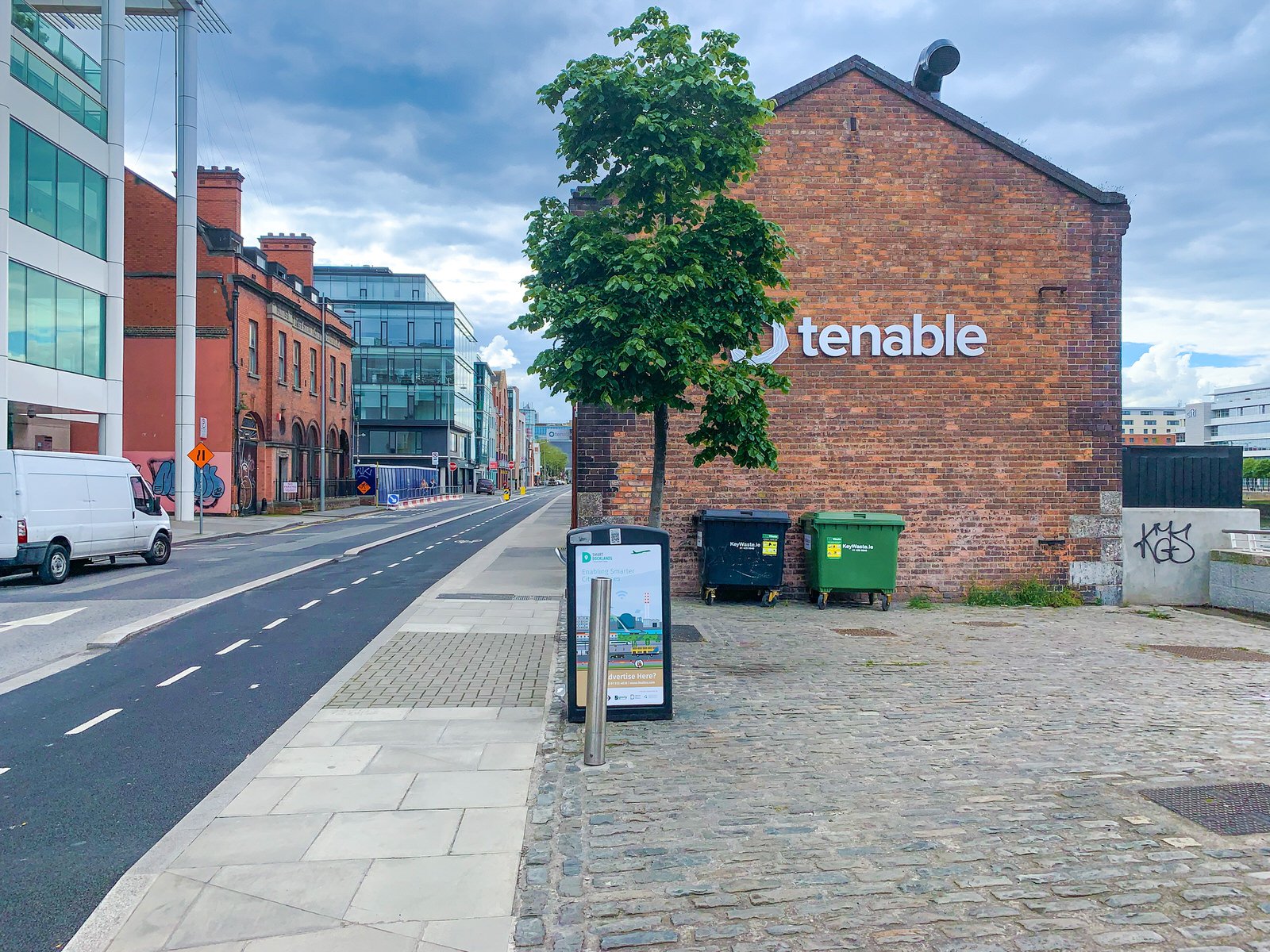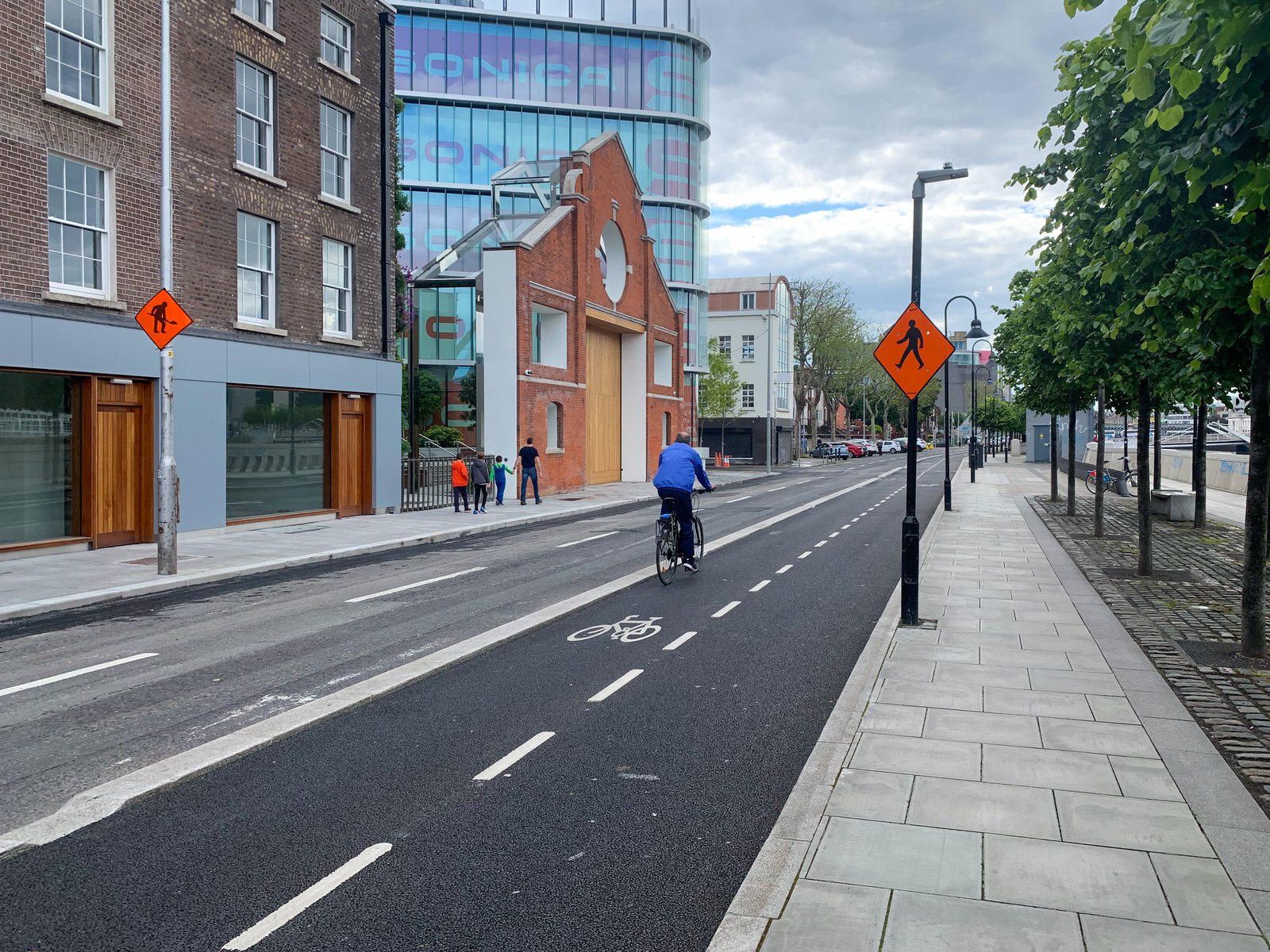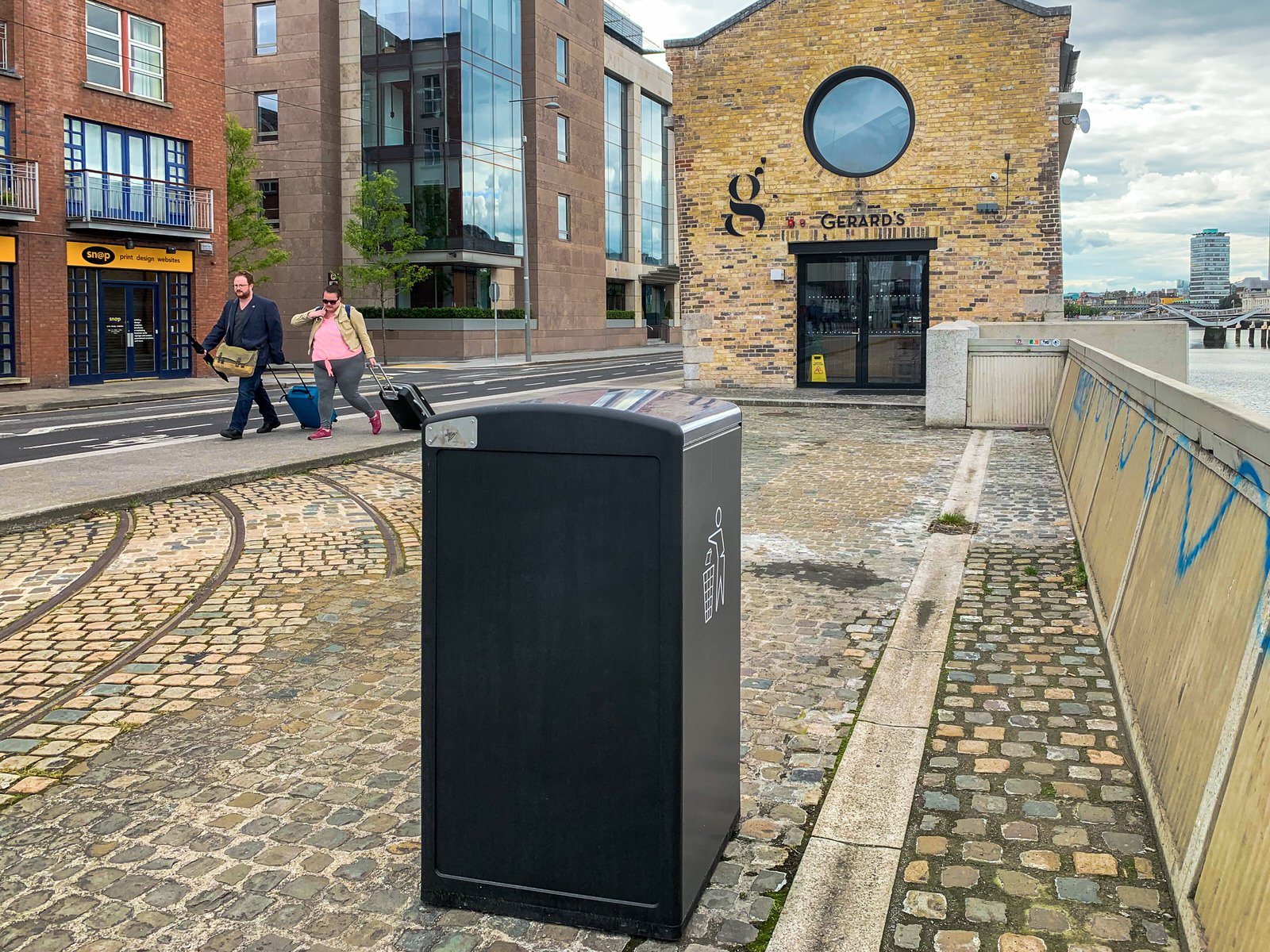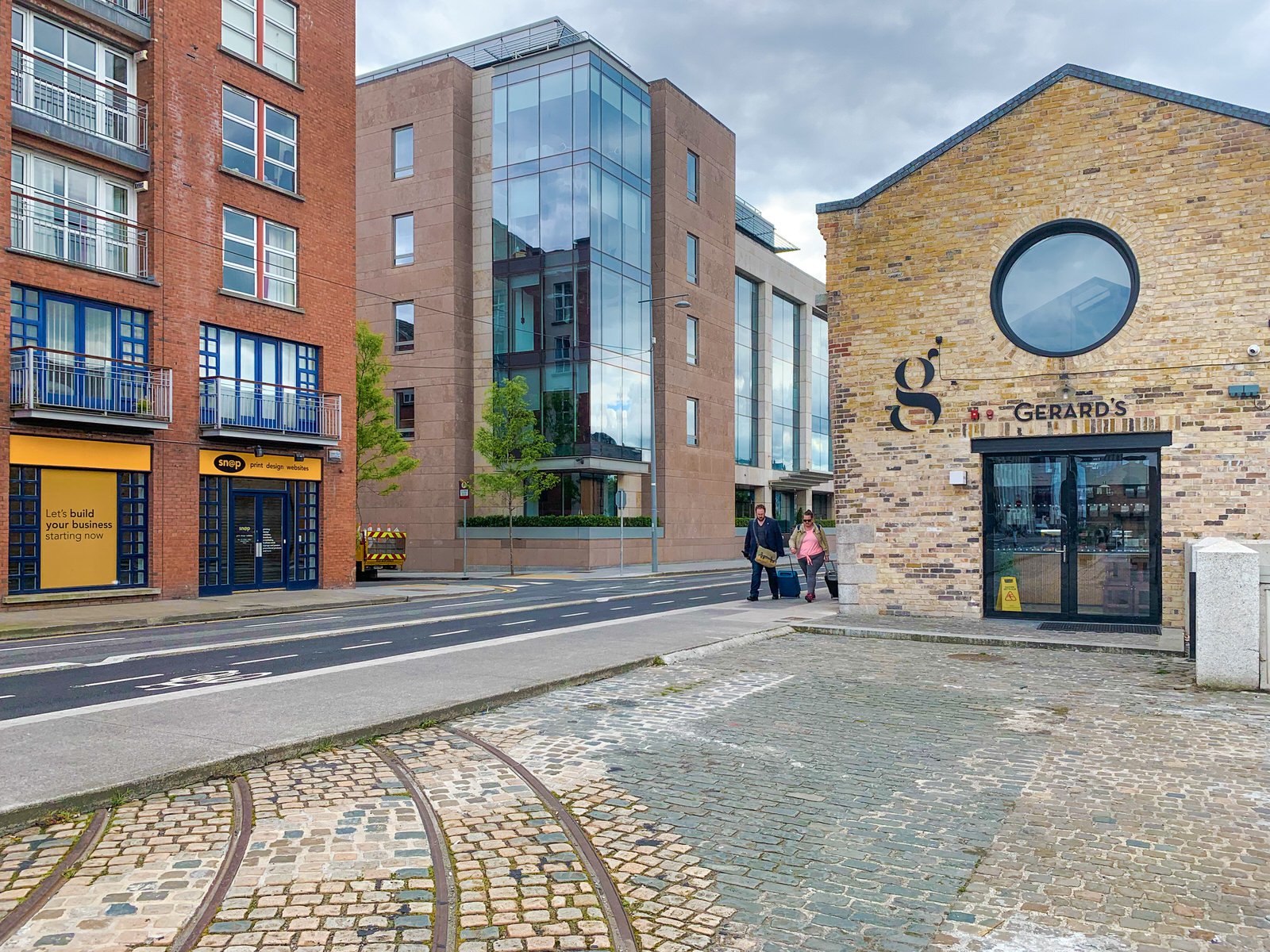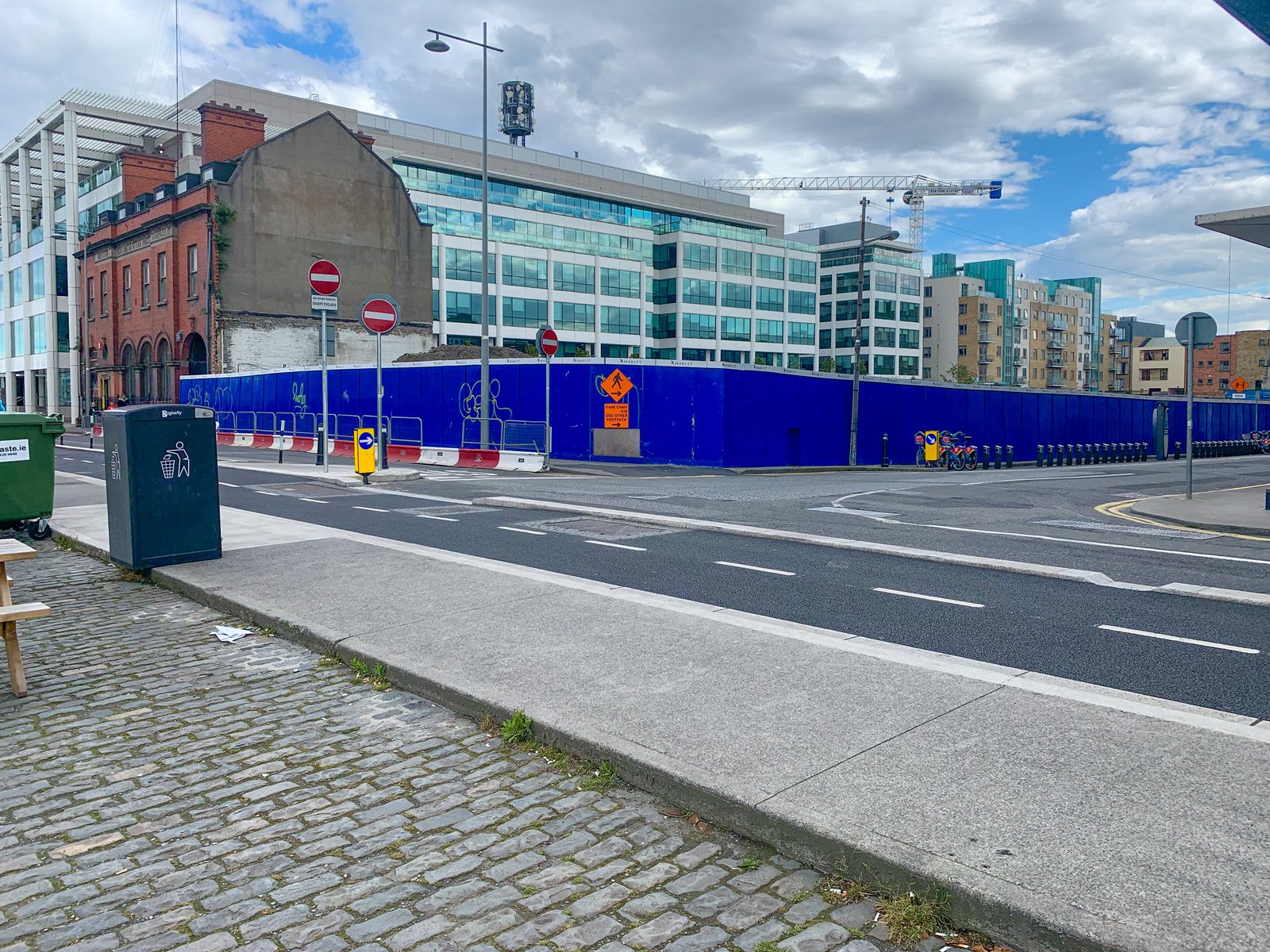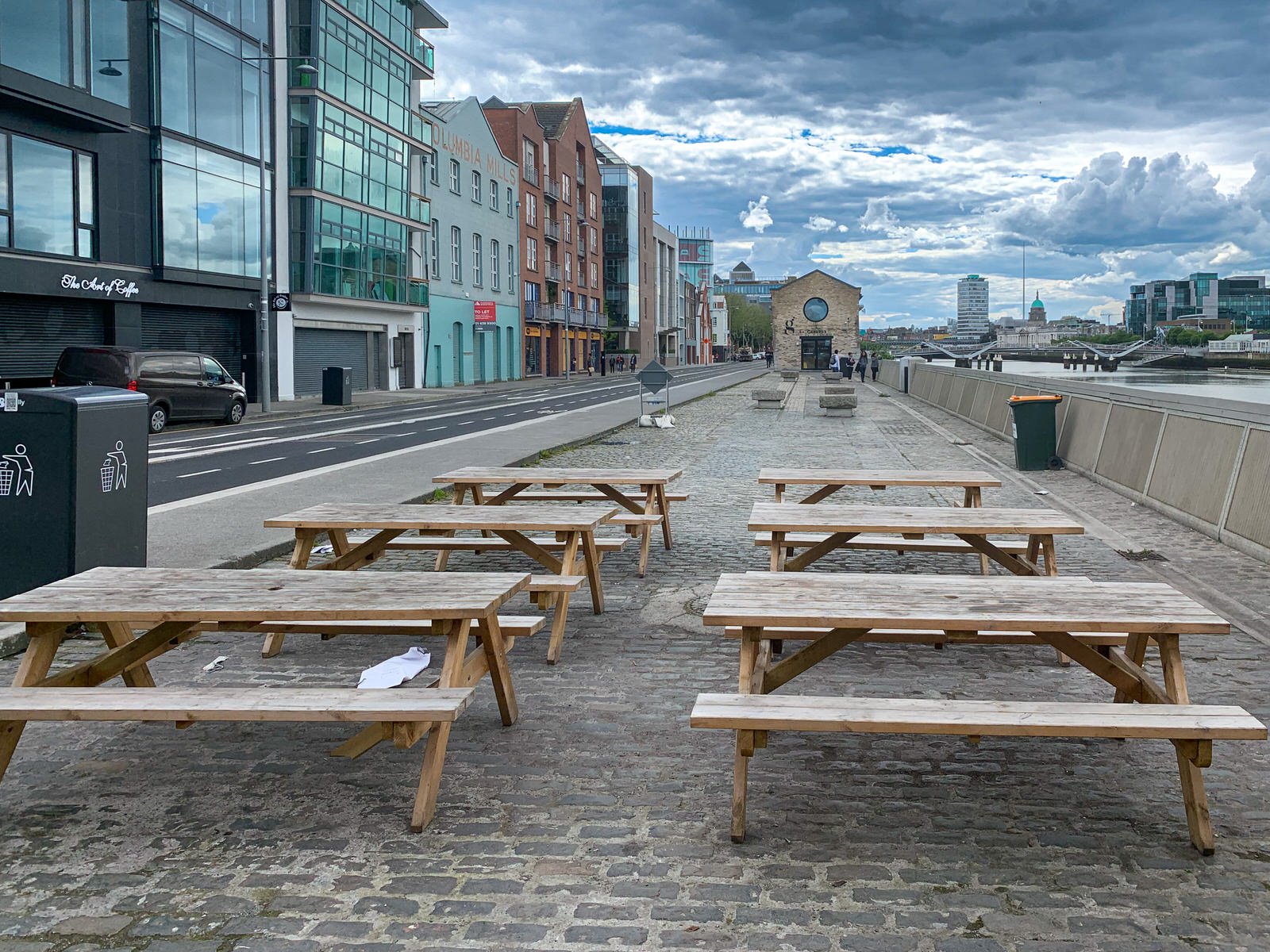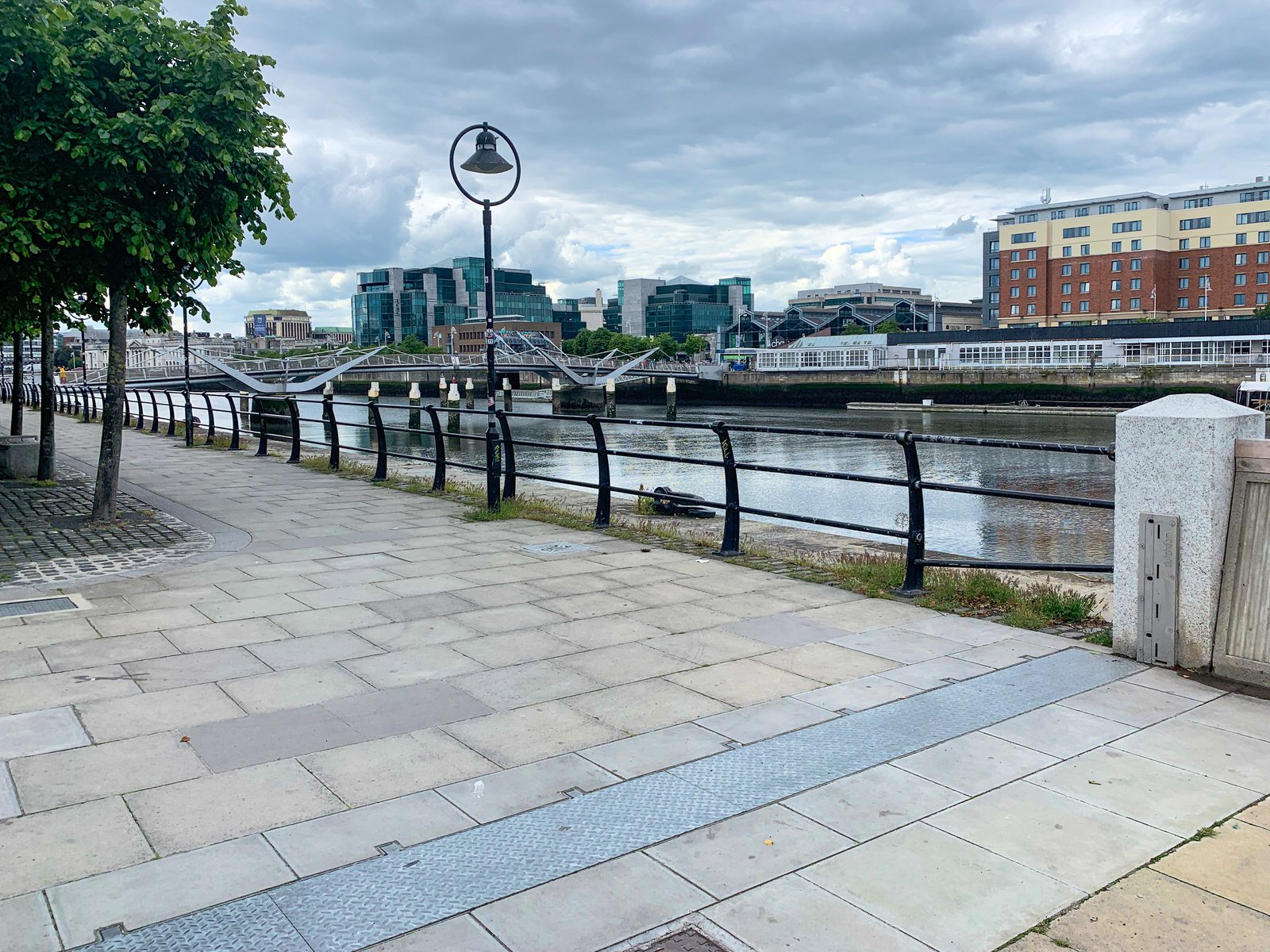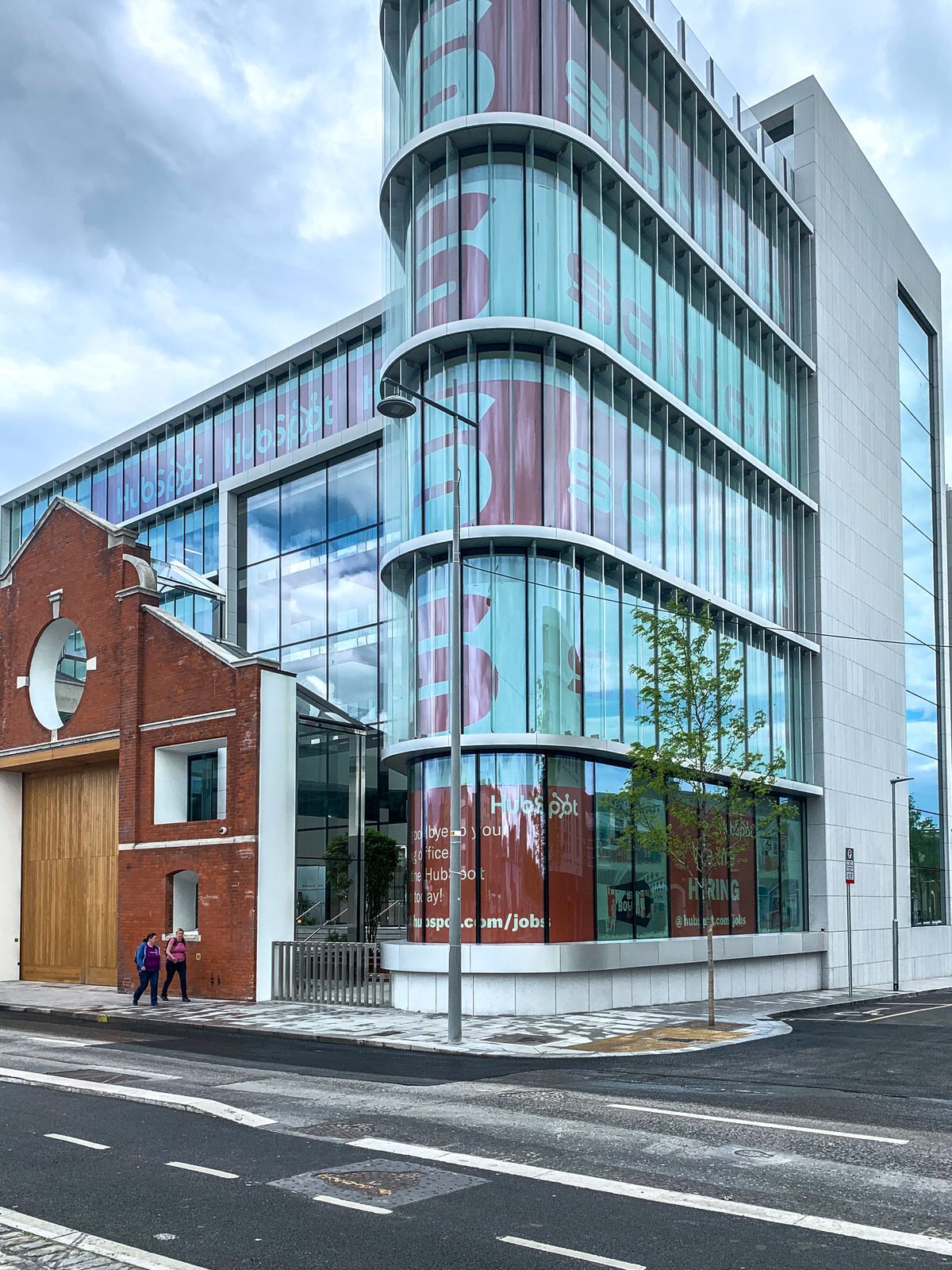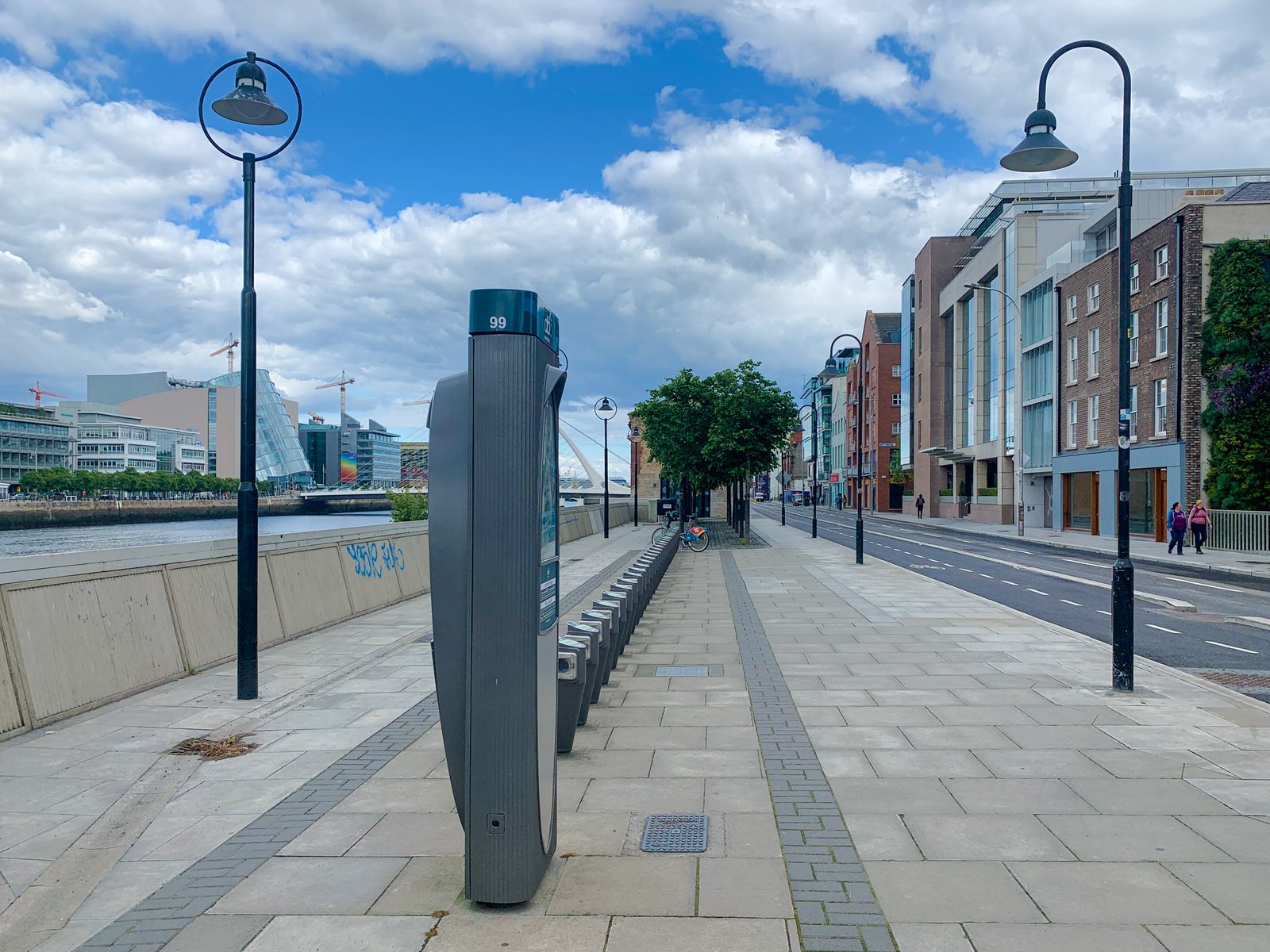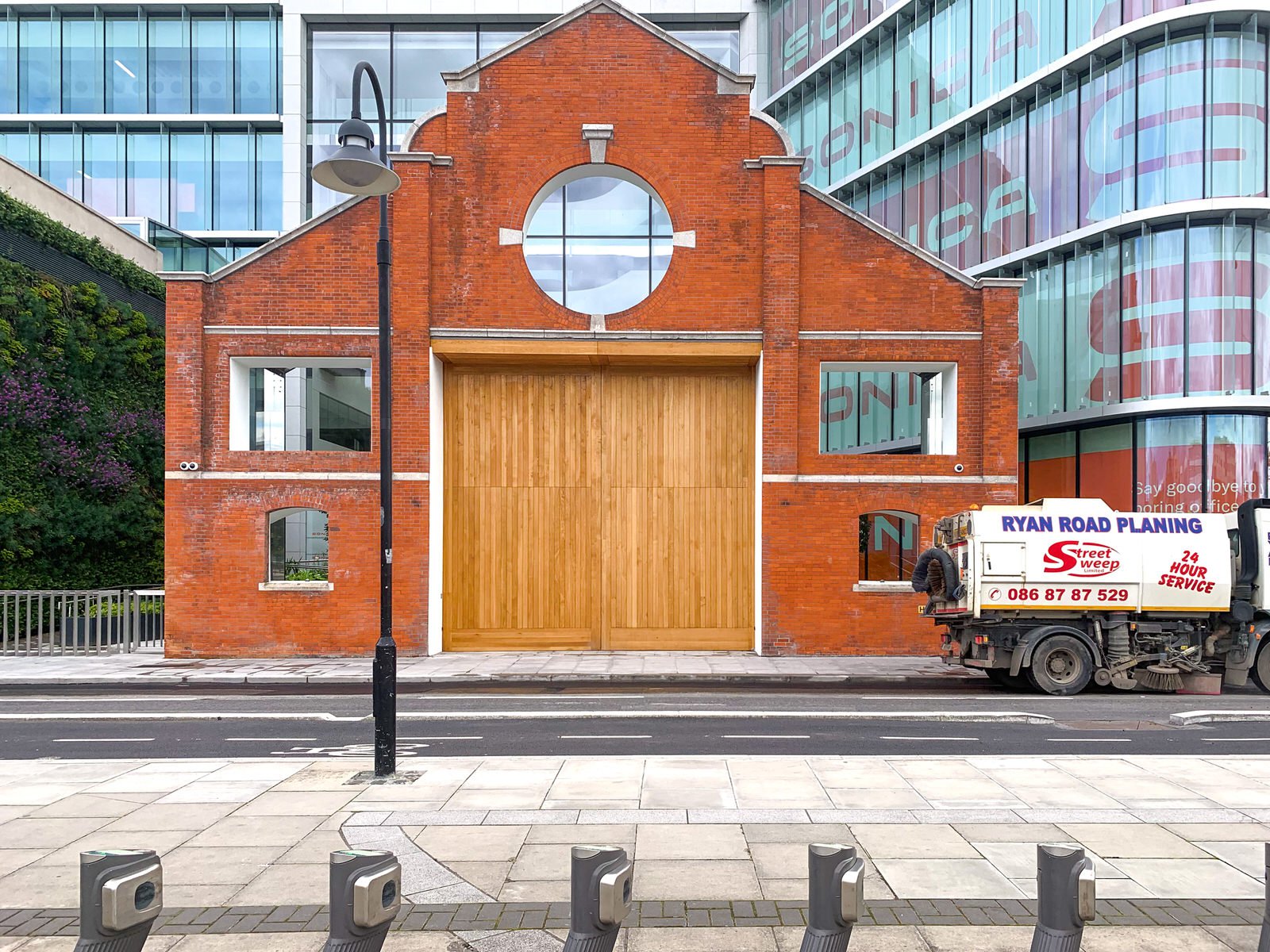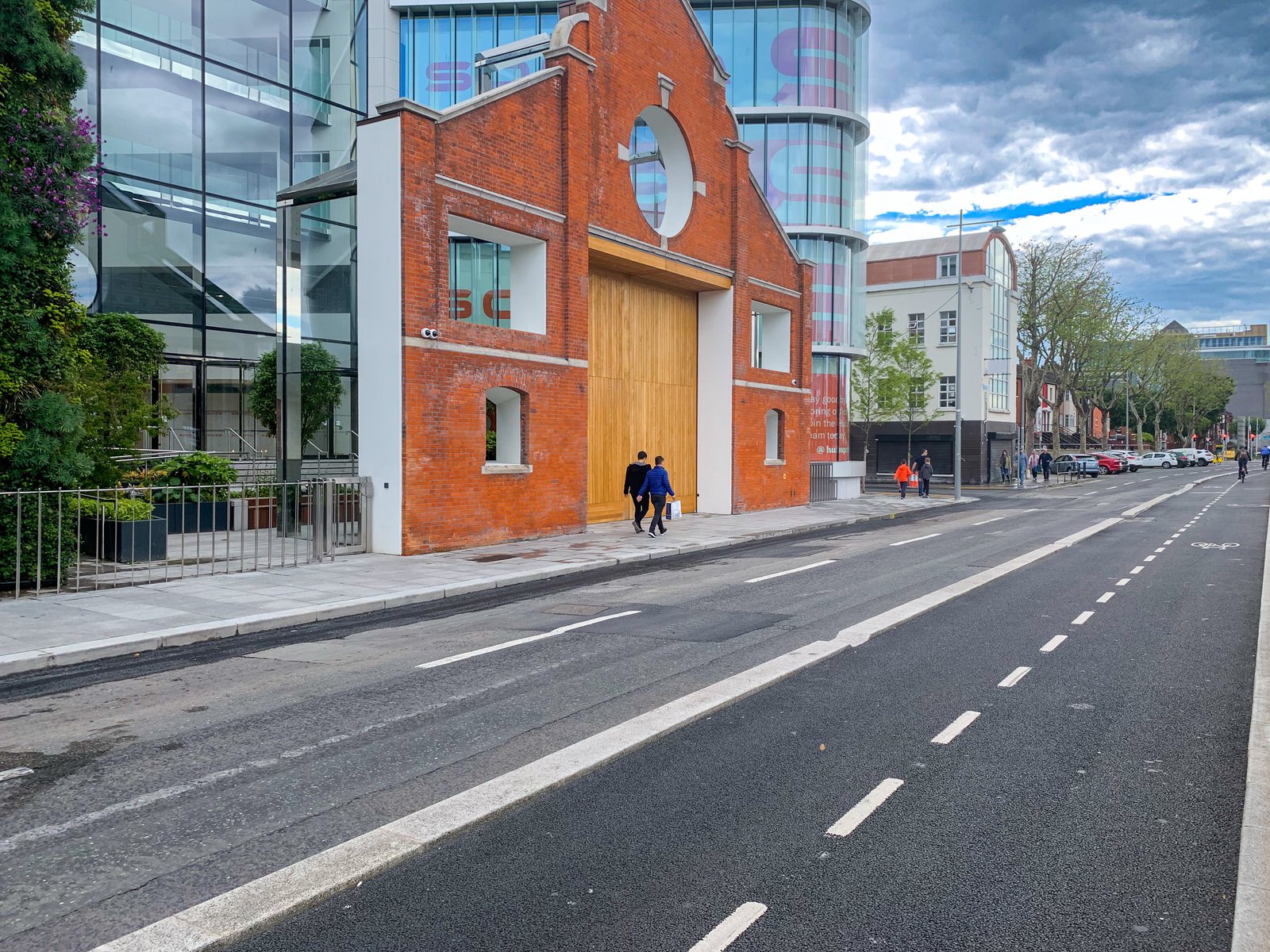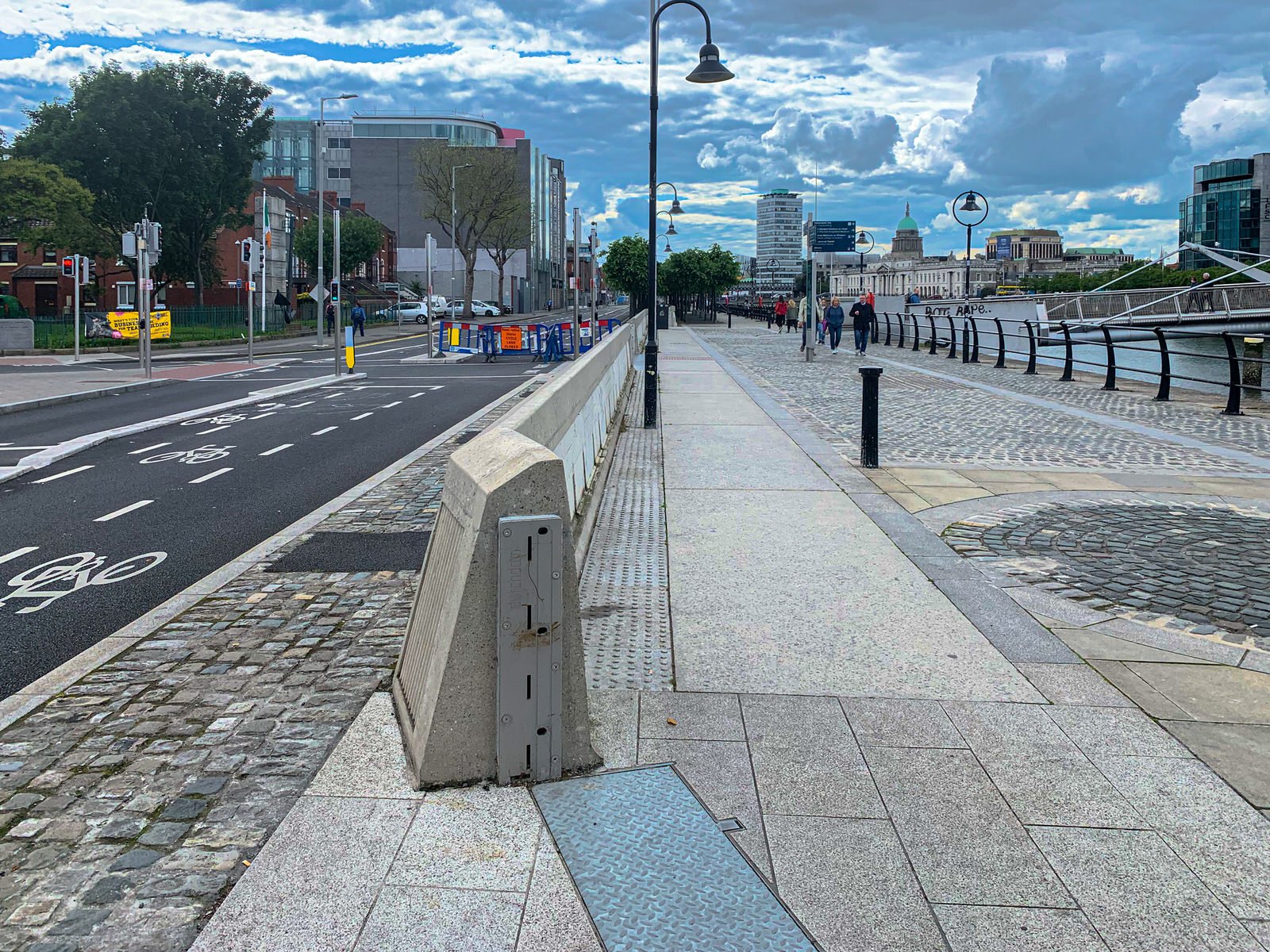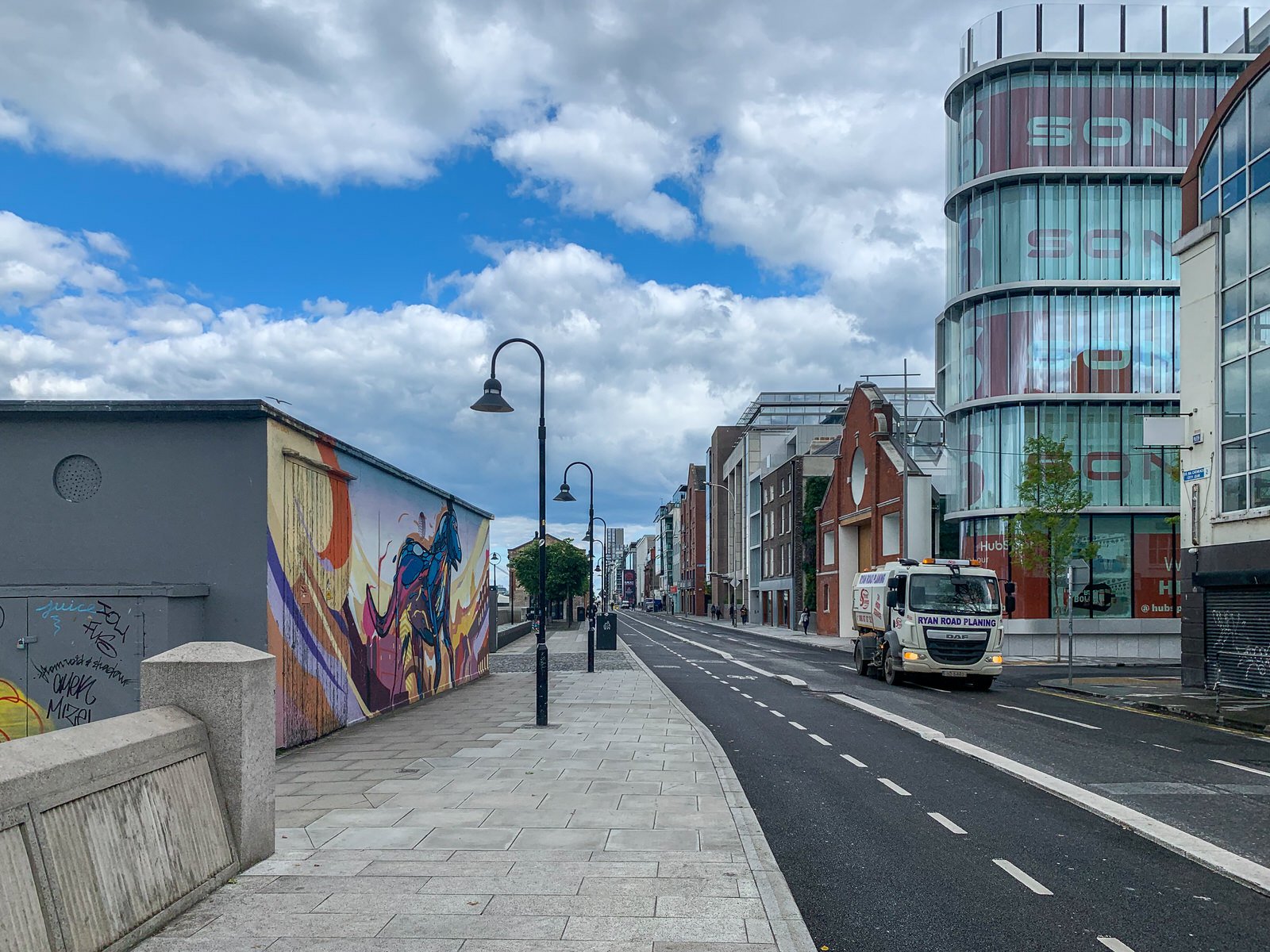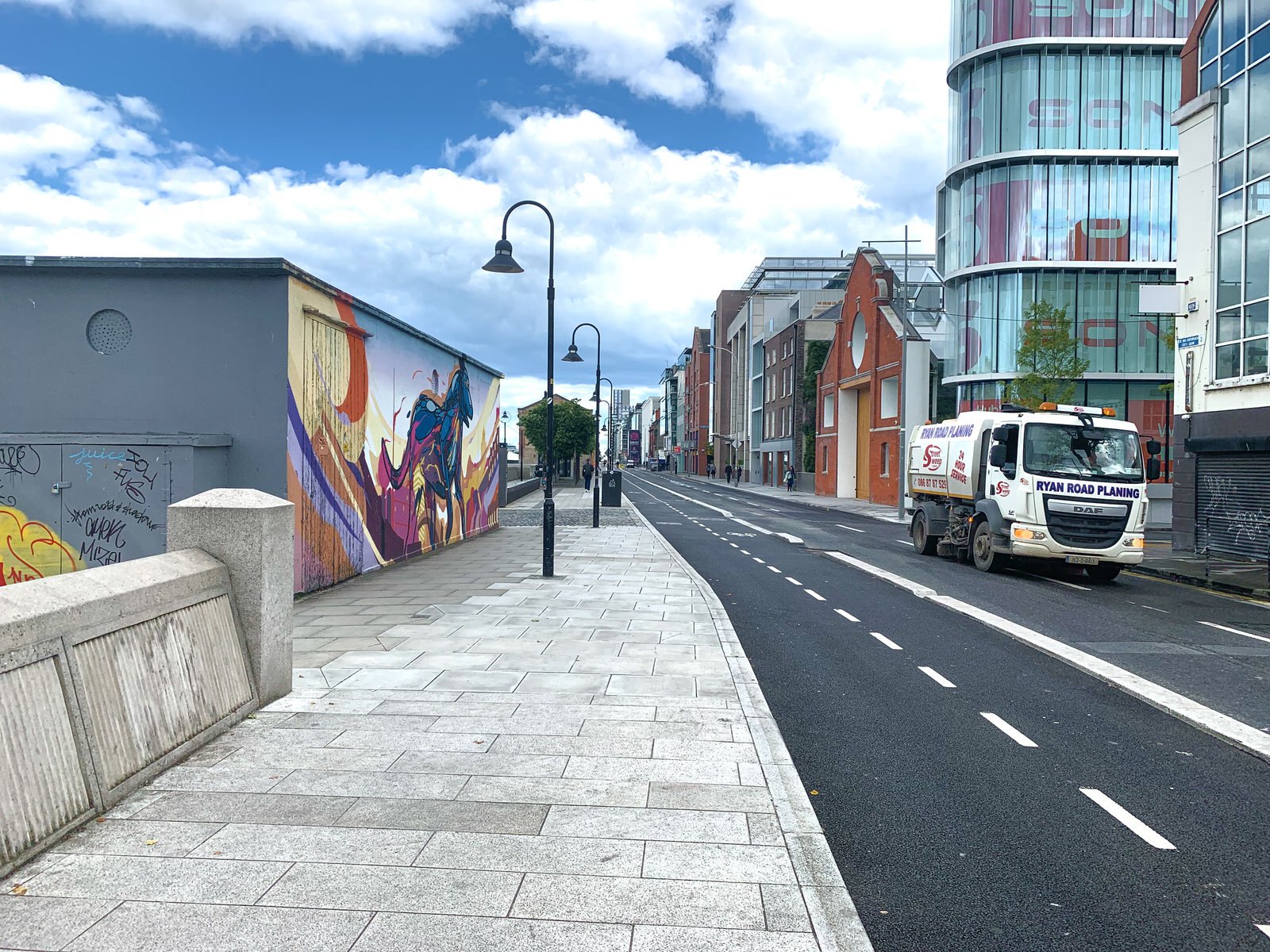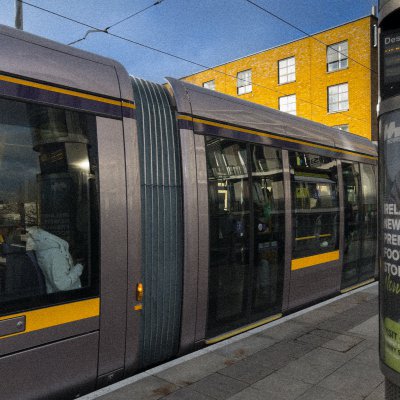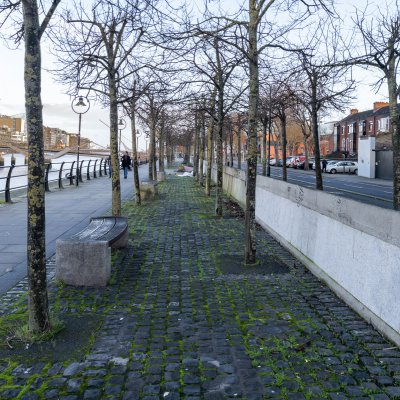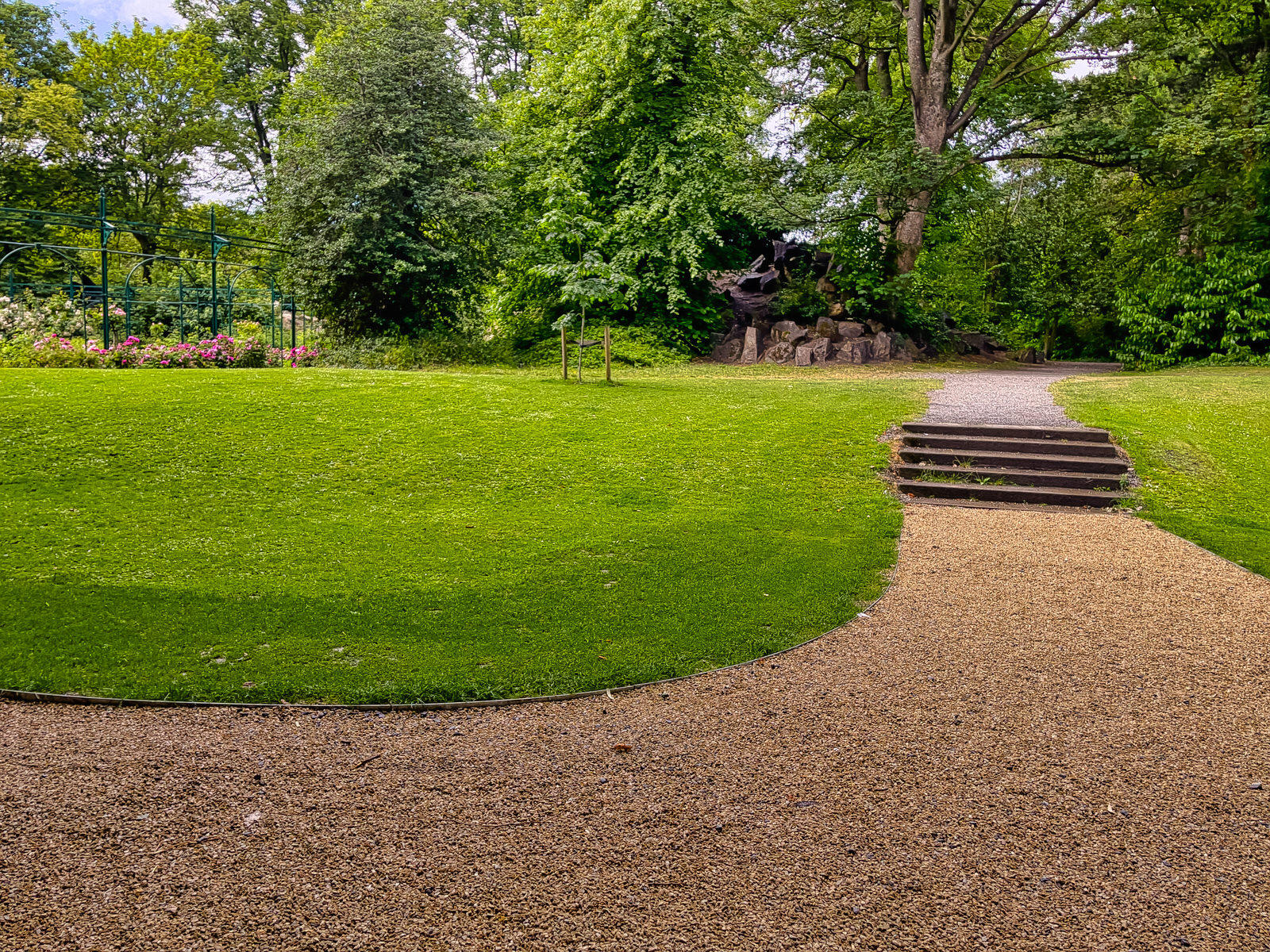Sir John Rogerson's Quay is a street and quay in Dublin on the south bank of the River Liffey between City Quay in the west and Britain Quay.
Named for politician and property developer Sir John Rogerson (1648–1724), the quay was formerly part of Dublin Port. It has some of the few remaining campshire warehouses in Dublin. As of the early 21st century, the previously functional maritime buildings and features of Sir John Rogerson's Quay have been redeveloped for heritage tourism, and newer office buildings built on the quay. This has included redevelopment of the quay's 'campshire' warehouses (associated with the historical use of the quay as a military 'camp'), and the renovation of a mid-19th century diving bell made by Grendons of Drogheda.
The diving bell has been a feature of the quays since the 1870s, and was used to build and maintain many of the walls of Dublin's quays. T
The campshires are the stretches of land between the quay and road on both the north and south quays in Dublin. They are so named because various British military regiments, such as the Gloucestershires or Leicestershires, would camp there before setting off or returning from overseas, making 'campshire' a portmanteau of 'camp' and '-shire'. It is not clear when the word was first used, but it must date to the First World War or earlier. The term appears in a 1957 issue of The Irish Times.
Before the Dublin Port facilities moved down river, this was the area of the Dublin quays where ships were loaded and unloaded. As a result, the area had a number of storage warehouses and travelling cranes. The campshires were renewed and renovated by the now-defunct Dublin Docklands Development Authority between 2000 and 2005, adding walkways and cycleways on both sides of the river Liffey, including parts of the Sutton to Sandycove project. A number of buildings on the campshires were also subject to renovations during the first decade of the 21st century.
The platforms of Charlemont LUAS Tram Stop are located on a steel and concrete beam bridge which crosses the Grand Canal. The waiting shelters are located directly above the canal itself. The advantage of this layout is that the stop can be accessed from either side of the canal: on the south side, a staircase and lift lead from the Grand Parade to the northbound platform.

